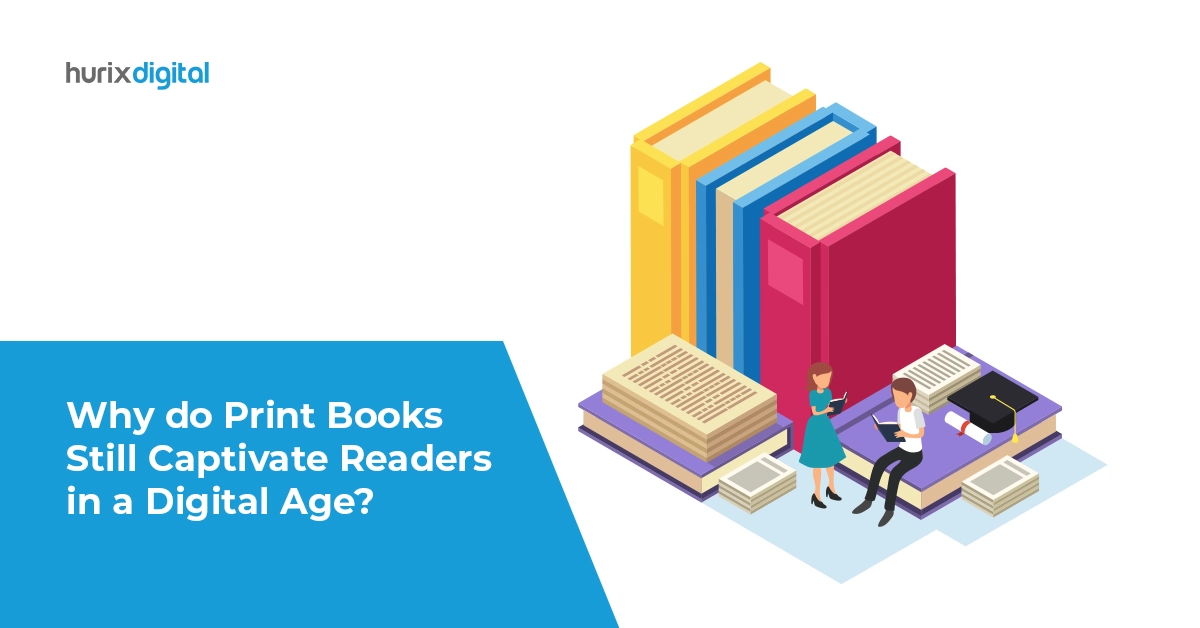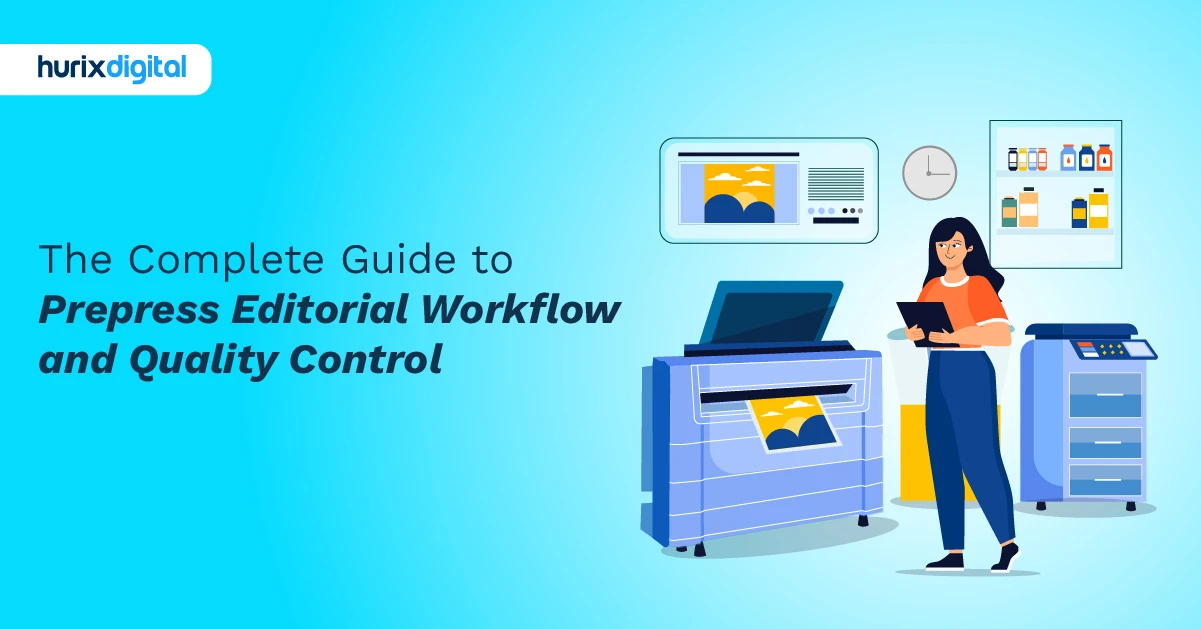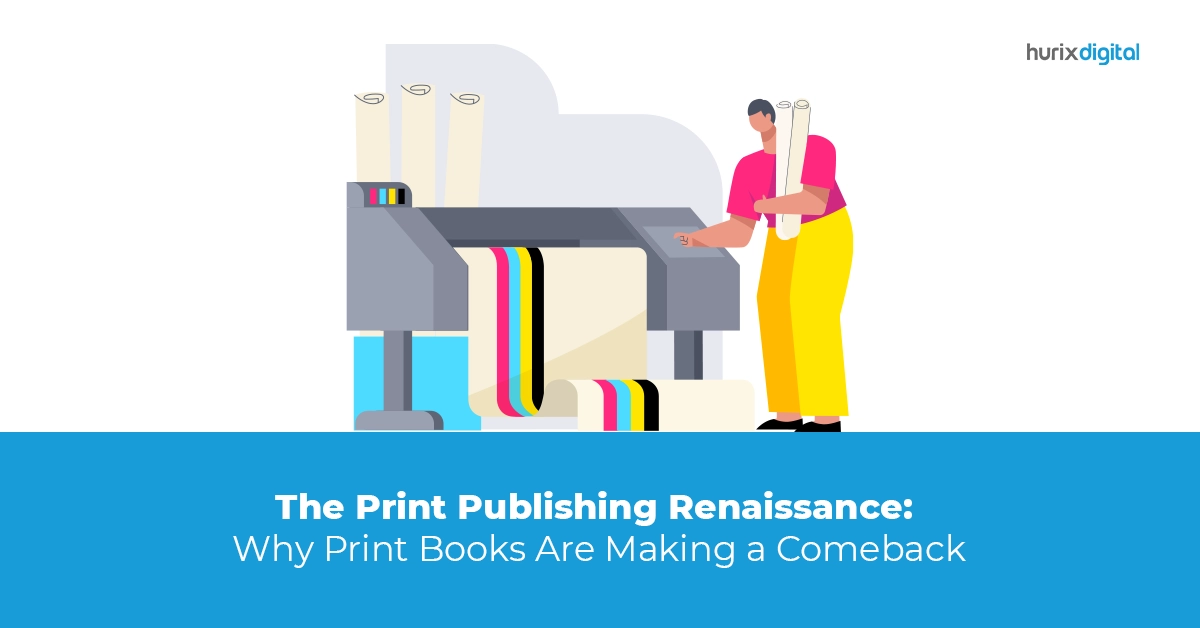
Why Do Print Books Still Captivate Readers in a Digital Age?
Summary
This blog examines how tangible books engage multiple senses, fostering meaningful experiences that extend beyond merely consuming information, thus enriching the reader’s overall experience.
In our fast-paced, digital world, information bombards us from every direction. eReaders, tablets, and smartphones offer convenient access to countless books. But have they truly replaced the magic of printed books?
A study found that readers scored significantly better on comprehension tests when reading physical text compared to digital text. This suggests that printed books offer a unique and powerful reading experience that goes beyond simply consuming information.
This blog discusses readers’ emotional connection with paper books and explores how print publishing can enhance focus, memory, and sleep.
Table of Contents:
- How Print Engages the Senses
- The Benefits of Print for Cognitive Processing
- The Emotional Bond between Reader and Book
- How Print Can Help You Sleep Better
- Conclusion
How Print Engages the Senses
Though digital screens are visually stimulating, they lack the rich sensory experience printed books offer. Here’s how print engages our senses in a way that digital devices can’t replicate:
- Touch: The feel of turning a crisp page, the weight of a book in your hands, and the texture of the paper all contribute to a more immersive reading experience.
- Smell: The unique scent of old books, fresh ink, or even the library itself can evoke powerful memories and enhance emotional connection.
- Sight: The visual appeal of a well-designed book goes beyond the text. The layout, font choice, and even the color of the paper all add to the reading experience.
The Benefits of Print for Cognitive Processing
In our information-saturated world, maintaining focus can be a challenge. Digital devices, with their constant notifications and distractions, can make concentrated reading difficult. Here’s how printed books can benefit your cognitive processing:
- Reduced Cognitive Load: Studies suggest that physical books reduce cognitive load. The physical limitations of a book – a finite number of pages, no hyperlinks – encourage deeper focus and immersion in the text.
- Improved Memory Retention: Research also indicates that readers tend to remember information better from physical books compared to digital text. The physical act of turning pages and interacting with the book creates a stronger memory trace.
- Enhanced Learning: The ability to highlight, take notes, and physically mark up a printed book can significantly enhance learning and comprehension. This active engagement with the text allows readers to create deeper connections with the material.
In contrast, digital devices often tempt us to multitask, skim content, and jump from one link to another. Printed books, by creating a focused and distraction-free environment, encourage deeper cognitive processing and, ultimately, a richer reading experience.
The Emotional Bond between Reader and Book
While digital reading offers convenience, it can struggle to replicate the powerful emotional connection readers forge with printed books. Here’s how print fosters a deeper engagement with the story:
- A Personal Journey: Physical books become companions on our reading journeys. Dog-eared pages, underlined passages, and worn spines become a tangible record of our emotional investment in the story. Each book becomes a unique artifact, reflecting our connection to the narrative.
- A Dedicated Space: In a world of constant digital stimulation, printed books offer a dedicated space for focused attention and emotional engagement. The act of picking up a physical book signifies a commitment to disconnect from distractions and immerse ourselves in the world on the page.
- Sensory Immersion: As discussed earlier, the multisensory experience of print – the feel of the paper, the weight of the book, and even the scent – contributes to a deeper emotional connection with the story. These sensory elements create a more immersive atmosphere, allowing readers to truly feel transported to the fictional world.
- Ownership and Investment: Owning a physical book fosters a sense of ownership and investment. We can revisit favorite passages, reread cherished stories, and even lend our well-loved books to friends, creating a shared literary experience. This sense of ownership builds a stronger bond with the narrative compared to the fleeting experience of digital reading.
- Tangible Memories: Printed books hold a special place in our memories. They act as physical reminders of specific times, places, and emotions associated with the story. Years later, picking up a well-worn book can transport us back to a specific time in our lives, enriching the overall reading experience.
In contrast, online reading can feel fleeting and impersonal. E-readers lack the physical connection and emotional weight of printed books. The ability to easily jump between titles and erase reading history diminishes the sense of investment and personal connection that comes with owning a physical book.
How Print Can Help You Sleep Better
Achieving a good night’s sleep can be a constant struggle in our digitally driven world. One of the reasons is the blue light emission from electronic devices. It disrupts the sleep cycle, and you may find it difficult to fall asleep and have a sound sleep. Here’s how printed books can contribute to a more restful night:
- Reduced Blue Light Exposure: Unlike digital screens, printed books don’t emit blue light, which suppresses melatonin production, the hormone that regulates sleep. Reading a physical book before bed allows your body to wind down naturally, promoting more restful sleep.
- Disconnection from Technology: Curbing screen time before bed is crucial for healthy sleep hygiene. Picking up a printed book instead of your phone or tablet creates a dedicated wind-down ritual, separating you from the constant stimulation of digital devices.
- Relaxation Ritual: The act of reading a physical book can be a calming and relaxing experience. Focusing on the story, the feel of the book in your hands, and the gentle turning of pages can quiet your mind and prepare you for sleep.
- Improved Sleep Quality: Studies suggest that reading printed books before bed can lead to deeper, more restorative sleep. This improved sleep quality can leave you feeling more rested and energized throughout the day.
In contrast, the blue light emitted from digital devices suppresses melatonin production and tricks your brain into thinking it’s still daytime. This disrupts your sleep cycle, making falling asleep and staying asleep harder. By replacing screen time with printed books before bed, you can create a relaxing sleep ritual and enjoy the benefits of a good night’s rest.
Also Read: The Crucial Role of Typesetting in Making eBooks Fabulous
Conclusion
The rise of digital reading doesn’t negate the enduring power of print. Printed books offer a unique and enriching experience that goes beyond simply consuming information. From multisensory engagement to emotional connection and benefits for sleep and cognitive processing, print continues to hold a special place in the hearts of readers.
However, both print and digital formats have their advantages. The ideal scenario might involve embracing both! Hurix Digital is a leading provider of digital content solutions, and we understand the importance of creating a seamless reading experience across all formats. We empower publishers to create high-quality eBooks and audiobooks while preserving the beauty and legacy of print.
Ready to explore how Hurix Digital can help you bridge the gap between print and digital? Contact us today to learn more about our comprehensive suite of content creation and publishing solutions.

Vice President – Content Transformation at HurixDigital, based in Chennai. With nearly 20 years in digital content, he leads large-scale transformation and accessibility initiatives. A frequent presenter (e.g., London Book Fair 2025), Gokulnath drives AI-powered publishing solutions and inclusive content strategies for global clients








